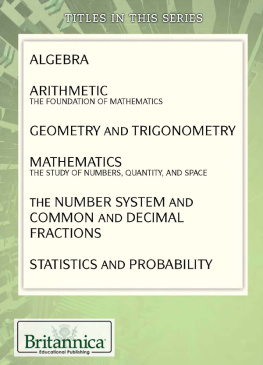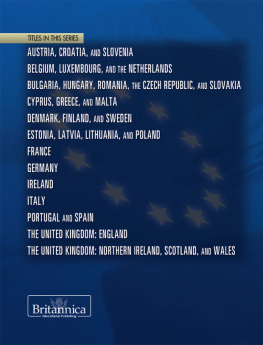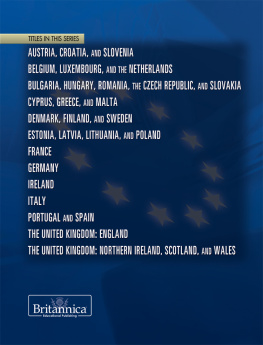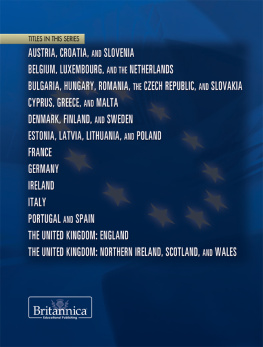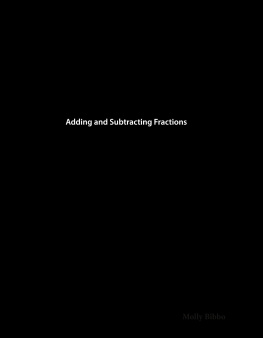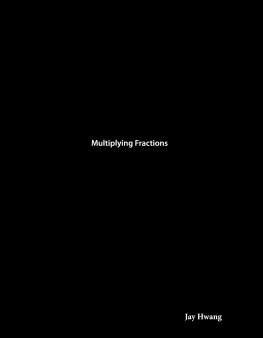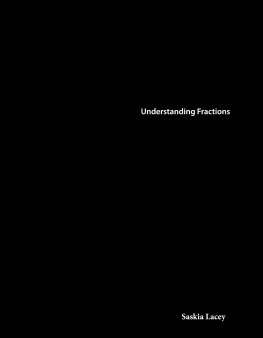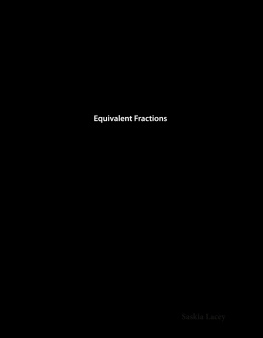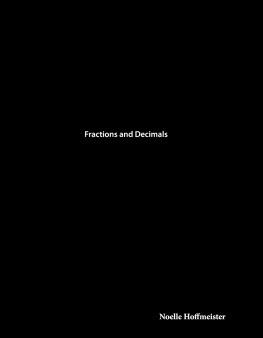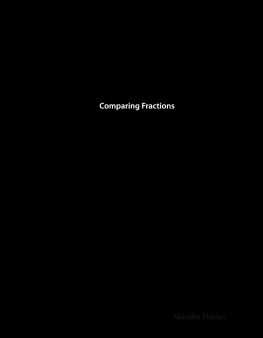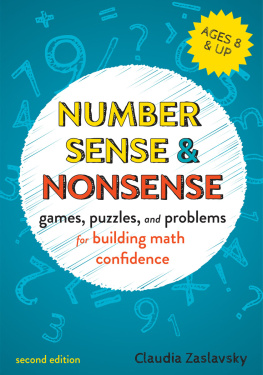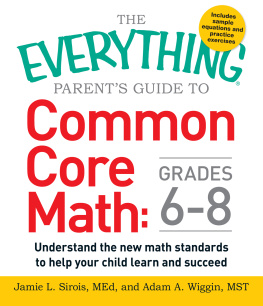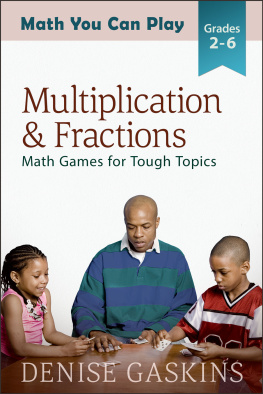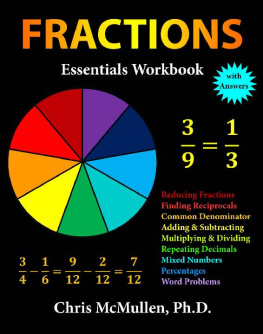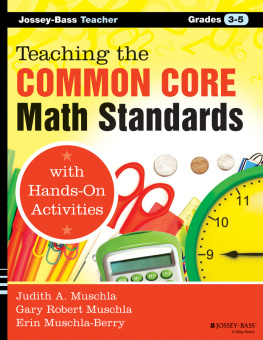THE NUMBER SYSTEM AND COMMON AND DECIMAL FRACTIONS

Published in 2015 by Britannica Educational Publishing (a trademark of Encyclopdia Britannica, Inc.) in association with The Rosen Publishing Group, Inc.
29 East 21st Street, New York, NY 10010
Copyright 2015 by Encyclopdia Britannica, Inc. Britannica, Encyclopdia Britannica, and the Thistle logo are registered trademarks of Encyclopdia Britannica, Inc. All rights reserved.
Rosen Publishing materials copyright 2015 The Rosen Publishing Group, Inc. All rights reserved
Distributed exclusively by Rosen Publishing.
To see additional Britannica Educational Publishing titles, go to rosenpublishing.com
First Edition
Britannica Educational Publishing
J. E. Luebering: Director, Core Reference Group
Anthony L. Green: Editor, Comptons by Britannica
Rosen Publishing
Hope Lourie Killcoyne: Executive Editor
Michael J. Cominskey: Editor
Nelson S: Art Director
Nicole Russo: Designer
Cindy Reiman: Photography Manager
Introduction and conclusion by John Strazzabosco
Cataloging-in-Publication Data
The number system and common and decimal fractions/edited by Michael J. Cominskey.First edition.
pages cm.(The story of math : core principles of mathematics)
Includes bibliographical references and index.
ISBN 978-1-62275-525-7 (eBook)
1. NumeralsJuvenile literature. 2. NumerationJuvenile literature. 3. FractionsJuvenile literature. I. Cominskey, Michael J., editor.
QA141.3.N83 2015
513.5dc23
2014024516
Photo credits: Cover and interior pages URRRA/Shutterstock.com; cover, p. 3 (top) Indivision 07 Grow B/Getty Images.
Contents
I magine being a Roman citizen confronted with a math problem 2,000 years ago. In the days of ancient Rome, if a merchant or tax collector needed to calculate thirteen plus sixty-nine, he would use pebbles or metal disks as counters. Romans moved these pebbles on marked boards to work out problems. Later the counters were strung on wires mounted in a frame.
People used this devicecalled an abacusinstead of working out their problems in writing because they could not carry ten conveniently with their cumbersome system of writing numbers. The Roman numeral system, in which letters represent numbers, was dominant in Europe for nearly 2,000 years. However, even simple addition of Roman numeralsin our example, XIII + LXIXwas difficult.
The math world made a great advancement when the Hindu-Arabic numeral system simplified matters several hundred years later by replacing a cumbersome XXIV with the sleek expression 24. In math, efficiency is key. With a simplified decimal system of numeration, mathematicians could now concentrate on depth and meaningful discovery in the field of mathematics, and mathematicians would of course find the new Hindu-Arabic numerals easier to read and write.
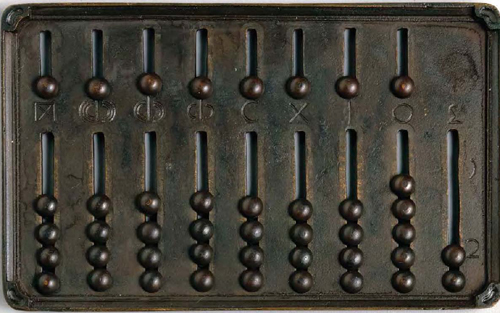
Ancient Roman merchants and tax collectors calculated math problems using a device called an abacus, such as the one shown here. Science & Society Picture Library/Getty Images
In this text, the reader will be pulled into the world of how we conceive of, count, and write numbers, explaining both the importance and practical applications of each number system presented.
Todays student might remark, But calculators and computers yield exact computations for us. This is true. But the computer must first be programmed, or told how to perform. The number system that calculators and computers use is what is called a binary system, which might be a new concept for the reader. As explained in this book, an understanding of the underlying basis of modern mathematical toolsincluding the binary systemwill enhance the readers skills in using both the tools and the math.
Does this suggest that, for instance, the decimal system that the math student is familiar with must now be tossed out? The answer, of course, is no. The reader will also find new ways to explore those systems with which he or she is already quite familiar. Lucid and captivating explanations will enhance understanding of the number systems underlying all mathematics, such as techniques for converting from one base system to another, applications of various base systems, conversion of common fractions into decimal fractions, and conversion of decimals back into common fractions.
Included are hints and practice problems that make the mastery of these techniques easier to accomplish. Each example is shown with a simple illustration, without which the reader might easily fall into little errors and traps that could make the calculation frustrating.
When asked to add mixed fractions, even the best of math students might be initially stumped for lack of just a single hint that would get the whole process started. This book of number systems, decimals, and fractionsand the many techniques it explainsis therefore a handy tool for any middle or high school student (or his or her parent) to have on the shelf for both problem solving and historical reference.
M ore than 5,000 years ago an Egyptian ruler recorded, perhaps with a bit of exaggeration, the capture of 120,000 prisoners, 400,000 oxen, and 1,422,000 goats. This event was inscribed on a ceremonial mace, or club, that is now in a museum in Oxford, England.
The ancient Egyptians developed the art of counting to a high degree, but their system of numeration was very crude. For example, the number 1,000 was symbolized by a picture of a lotus flower, and the number 2,000 was symbolized by a picture of two lotus flowers growing out of a bush. Although these symbols, called hieroglyphics, permitted the Egyptians to write large numbers, the numeration system was clumsy and awkward to work with. The number 999, for instance, required 27 individual marks.
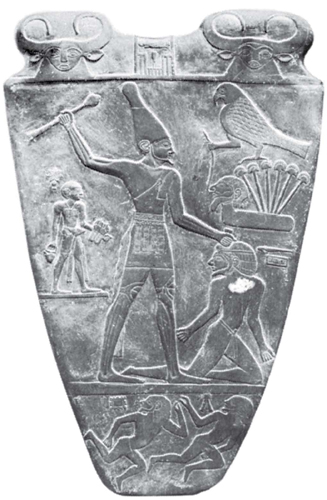
King Narmer of ancient Egypt (pictured above) recorded great military feats and the capture of prisoners on maces and palettes. He exaggerated these figures using hieroglyphics that represented very large numbers. Hirmer Fotoarchiv, Munich
In our system of numeration, we use ten symbols called digits0, 1, 2, 3, 4, 5, 6, 7, 8, and 9and combinations of these symbols. Our system of numeration is called the decimal, or base-ten, system. There is little doubt that our ten fingers influenced the development of a numeration system based on ten digits.
Other numeration systems were developed in early cultures and societies. Two of the most common were the base-five system, related to the number of fingers on one hand, and the base-twenty system, related to the number of fingers and toes.
In some languages the word for five is the same as the word for hand, and the word for ten is the same as the word for two hands. In our own language the word digit is a synonym for the word fingerthat is, ten digits, ten fingers.
Still another early system of numeration was a base-sixty system developed by the Mesopotamians and used for centuries. These ancient people divided the year into 360 days (6 60). To this day we still divide the hour into 60 minutes and the minute into 60 seconds. Numeration systems of current interest include a binary, or base-two, system used in computers and a base-twelve, or duodecimal, system.

